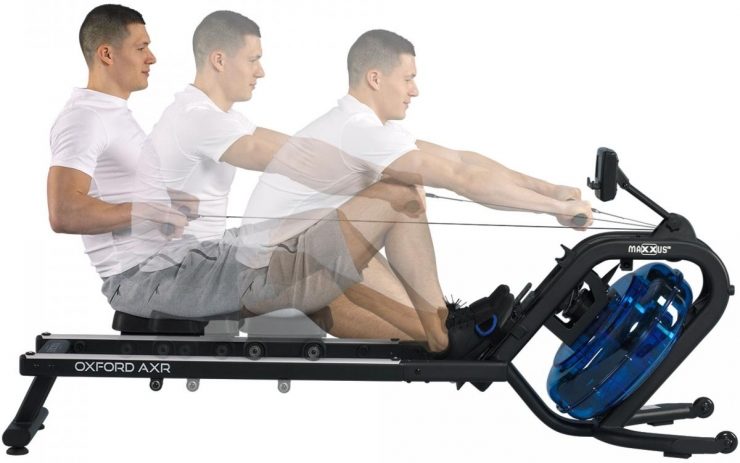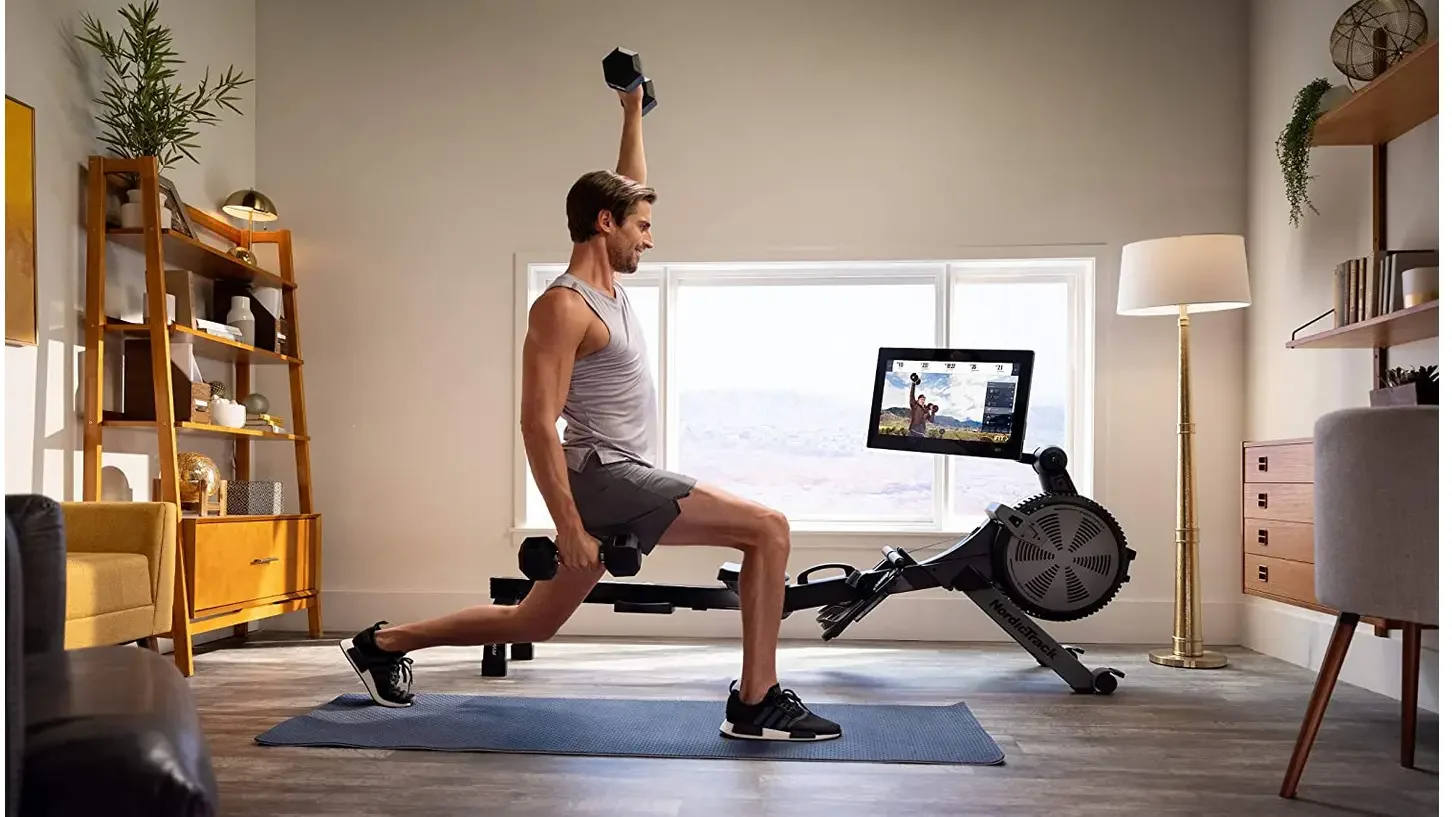For sure, you heard about the importance of “recovery,” but do you truly understand what it means? If you’re picturing long hours lounging on the couch, think again! Recovery workouts, often referred to as active recovery, are low-intensity exercises following demanding workouts. These exercises are designed to help your body bounce back more swiftly and efficiently.
Enter the rowing machine, an unsung hero in many gyms. The humble ‘erg’ is a powerhouse tool, not only for full-throttle workouts but also for facilitating your recovery. Using a rowing machine for recovery workouts can provide excellent low-impact, full-body movement, promoting blood flow and aiding in muscle repair.
But why is recovery training on a rowing machine so significant? For starters, it’s about versatility and holistic engagement. Unlike many gym machines, the rowing machine engages multiple muscle groups simultaneously, making it a perfect tool for active recovery. Now, let’s row our way deeper into the world of recovery workouts.
The Role of Recovery Workouts
Recovery workouts aren’t your standard sweat-inducing, heart-pounding exercises. Instead, they’re more about moving lightly and gently. Their goal is not to challenge your fitness boundaries but rather to keep your body active, promoting blood flow and facilitating muscle repair and recovery.
From a scientific perspective, recovery workouts help decrease the buildup of lactic acid, a byproduct of intense exercise that contributes to muscle soreness. They also promote better circulation, which delivers nutrient-rich blood to your muscles, helping them repair and grow stronger.
Recovery workouts are the unsung heroes of a balanced training regimen. They can enhance your performance in subsequent workouts, reduce muscle soreness, accelerate healing, and even boost your mood. Now that’s something worth incorporating into your fitness routine!
The Role of the Rowing Machine in Recovery Workouts
So, how does the rowing machine come into play? A rowing machine offers a low-impact, full-body workout, perfect for your recovery days. It allows for a controlled, fluid motion that gets your blood flowing without the harsh impact or strain associated with some other forms of exercise.
Rowing helps flush out lactic acid from your system, reducing muscle soreness and stiffness. By increasing circulation, it delivers oxygen and nutrients to your muscles, promoting faster recovery.
Rowing for recovery not only speeds up muscle healing but also keeps you active and fit. It’s a great way to burn some calories and keep your cardiovascular health in check without adding additional stress to your body.
Tips for Proper Rowing Recovery Workouts
Keep Correct Posture
As with any form of exercise, proper form is crucial in recovery rowing. A good posture reduces the risk of injuries and ensures that your muscles are working efficiently. Remember, recovery workouts are meant to help your body heal, not cause more strain.
Step-by-Step Guide on Proper Rowing Form

Let’s go through the right form for a recovery row:
- The Catch: Start with your knees bent, shins vertical, and arms reaching forward. Your back should be straight, and your core engaged.
- The Drive: Push back with your legs first, then lean back slightly with your torso, and finally, pull the handle towards your lower chest.
- The Finish: Your legs should be fully extended, the handle held lightly near your lower chest, shoulders back, and core engaged.
- The Recovery: Extend your arms first, then lean your torso forward, and finally bend your knees to slide forward to the starting position. This should be a mirror image of the drive phase.
Remember, the rowing movement should be fluid and controlled, not jerky or rushed, especially when you’re focusing on recovery.
Tip. For more in-depth information, read the article: Proper Technique On Rowing Machine
Common Mistakes to Avoid
Avoid hunching your shoulders, pulling the handle too high or too low, and bending your knees before your hands pass over them during the recovery phase. These mistakes could lead to inefficiencies and even injuries.
Tip. For more information, read our guide Common Rowing Machine Mistakes and How to Avoid Them
Appropriate Pace and Intensity
For recovery workouts, you should row at a light to moderate intensity. You should be able to maintain a conversation during these workouts. If you’re huffing and puffing, you’re going too hard.
Recovery Workouts Using a Rowing Machine
Before we delve into the types of recovery workouts, let’s discuss preparation. Just as with any workout, starting with a warm-up is crucial—even for recovery! Start with some gentle movements like walking or light cycling to get your blood flowing. After each recovery rowing session, ensure to cool down with some stretching exercises to maintain flexibility and prevent stiffness.
There are several ways to use the rowing machine for recovery workouts. Here are a few options to get you started:
1. Steady-State Recovery Workout
The Steady-State workout is often seen as the bread and butter of recovery workouts. It involves maintaining a consistent, comfortable pace and intensity throughout your session.
This workout is not about speed or resistance but rather about keeping your body moving, promoting blood flow to your muscles, and enhancing your overall stamina. Your goal is to feel rejuvenated rather than exhausted after this session.
Begin by setting a comfortable stroke rate—around 18 to 22 strokes per minute—and try to maintain this throughout the workout. Row at this steady pace for 20 to 40 minutes, depending on your current fitness level and how your body feels.
Tips: Keep your intensity low. You should be able to hold a conversation throughout this workout. If you’re breathing too hard to speak comfortably, lower your intensity.
2. Light Interval Recovery Workout
Light interval workouts introduce some variety to your recovery sessions. They involve alternating periods of easy rowing with periods of even easier rowing.
This workout offers a gentle cardiovascular stimulus without overtaxing your body. It allows you to experience the benefits of interval training while keeping recovery as the main focus.
Start with a 3-minute light rowing period, followed by a 2-minute very light rowing period. Repeat this cycle for the duration of your workout, which could be anywhere from 20 to 30 minutes based on your comfort and fitness level.
Tips: Ensure your ‘easy’ and ‘very easy’ intervals are distinctly different in intensity. Remember, this is still a recovery workout—don’t push yourself too hard.
3. Time-Based Recovery Workout
Time-Based Recovery Workouts are simple, straightforward, and great for beginners or those who prefer a no-fuss approach.
This workout involves rowing at a light intensity for a predetermined amount of time, with a focus on maintaining a relaxed, consistent stroke rate.
Set a goal—let’s say 30 minutes—and maintain a steady, comfortable pace until you reach that goal. The stroke rate could be anywhere between 20-24 strokes per minute.
Tips: Use this workout to really focus on your technique. As you’re not pushing for speed or intensity, it’s a perfect opportunity to make sure your form is spot on.
4. Heart Rate-Based Recovery Workout
The Heart Rate-Based Recovery Workout is a more advanced form of recovery training.
This workout involves maintaining your heart rate within a particular range that aids recovery. By staying in the recovery zone, you allow your body to flush out lactic acid, increase blood flow, and improve your cardiovascular system without causing excessive fatigue.
Using a heart rate monitor, aim to keep your heart rate within 55-65% of your maximum heart rate. Continue rowing at a pace that allows you to maintain your heart rate in this zone for about 20-40 minutes.
Tips: If your heart rate exceeds the target zone, slow down. If it’s too low, pick up the pace a bit. Remember to always listen to your body.
By using these different workouts, you can keep your recovery days diverse and engaging while giving your body the care and restoration it needs. Remember to adjust your recovery workouts based on how your body is feeling and what it needs on any given day.
Customize Recovery Workouts
When customizing your recovery workouts, consider your fitness level and how hard your previous workout was. If you’re feeling particularly sore or fatigued, opt for a shorter, more relaxed recovery workout. As you become more accustomed to rowing and your fitness improves, you can gradually increase the duration and intensity of your recovery workouts.
Nutrition and Hydration for Recovery
Food and fluids play a key role in the recovery process. Your body needs to replenish its energy reserves and repair muscles after exercise, and that’s where nutrition and hydration come in.
When it comes to nutrition, proteins, carbohydrates, and healthy fats are your best friends.
- Proteins: They’re the building blocks for muscle repair. Include lean protein sources like chicken, fish, eggs, or plant-based options like lentils, beans, and tofu in your meals.
- Carbohydrates: They replenish your energy reserves. Opt for complex carbs like whole grains, fruits, and vegetables for sustained energy.
- Fats: Healthy fats help in nutrient absorption. Avocados, nuts, and seeds are excellent choices.
Staying hydrated is crucial for recovery. Water supports every metabolic function in your body, including nutrient transport and muscle recovery. Aim to sip water throughout the day, not just during workouts. For more intense or longer workouts, you might consider a sports drink to replace electrolytes.
Additional Recovery Techniques to Pair with Rowing Workouts

Stretching
Stretching after a rowing session can aid recovery by increasing flexibility, decreasing muscle tension, and promoting relaxation. Include stretches for the major muscle groups you’ve worked on the rower: your back, arms, and legs.
Sleep
Don’t underestimate the power of a good night’s sleep! It’s your body’s prime time for recovery. Quality sleep allows your body to repair, rebuild, and strengthen.
Other Tools (e.g., Foam Rolling, Massage)
Explore other recovery tools like foam rolling, which can help alleviate muscle tension and improve flexibility. Massages can also aid recovery, increase circulation, and help you relax.
Summary
We’ve rowed quite a distance together in this article, haven’t we? We’ve discovered how rowing is not just a fantastic workout but also a potent recovery tool. Utilizing the rowing machine for recovery workouts promotes blood flow, aids in muscle repair, and keeps you active without overtaxing your body. Plus, it’s a great way to mix up your fitness routine and keep things fresh.
So, are you ready to give recovery rowing a try? Remember, fitness is not just about pushing your limits in every workout—it’s about balance and giving your body the care it needs to perform optimally. Incorporating recovery workouts into your routine is a great way to achieve this balance. Happy rowing, and here’s to your swift recovery and continued fitness journey!
Remember, it’s essential to listen to your body and adjust your workouts, including your recovery workouts, according to how you’re feeling. Everyone’s body responds differently to exercise, so what works for one person might not work for another. Stay consistent, stay patient, and, most importantly, stay committed to your journey of fitness and well-being.
